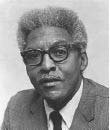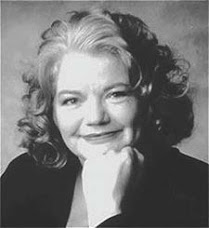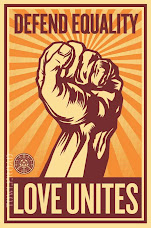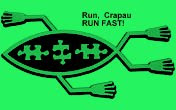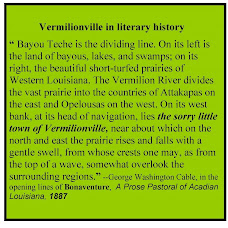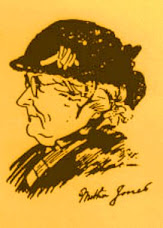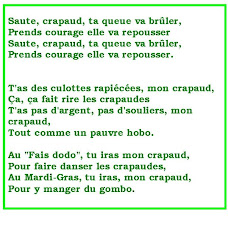Harvey B. Milk
Saturday, May 22, 2010
Friday, May 21, 2010
Today in Gay History
Frank Kameny (b. 1925)
Gay Rights Founding Father
Frank Kameny is one of the founding fathers of the American gay rights movement. He helped radicalize the homophile movement, preparing the way for the mass movement for equality initiated by the Stonewall Rebellion of 1969.
He was born Franklin Edward Kameny on May 21, 1925, into a New York middle-class Jewish family. A prodigy who had taught himself to read by the age of four, he entered Queens College at the age of 15 to study physics. He interrupted his education, however, to serve in the armed forces during World War II. After the war he returned to his studies, and in 1956 he received a Ph.D. in astronomy from Harvard University.
Upon graduation Kameny moved to Washington, D. C. to join the faculty of Georgetown University. In July 1957, after one year of teaching, Kameny obtained a civil service job as an astronomer with the United States Army Map Service and began what he hoped would be a fulfilling scientific career. However, events over the next couple of years changed the direction of his life forever.
Late one night in 1957, Kameny was arrested on a morals charge in Lafayette Park, a popular gay cruising area in Washington, D. C. He was released, and nothing immediately came of the incident. It was not long afterward, however, that an investigator from the Civil Service Commission came to question him about rumors that he was a homosexual.
That fall, after serving in his job for only a few months, Kameny was fired from the Map Service, and early the next year he learned that he had been barred from all future employment in the federal government. A victim of the McCarthy-era regulations that branded homosexuals as potential traitors and unfit for government employment, Kameny found his career in ruins.
This experience drove Kameny to militant activism. "My dismissal amounted to a declaration of war against me by the government," Kameny later said, "and I tend not to lose my wars." Kameny attempted to sue the government to get his job back, a lengthy process that went through several appeals. However, all his legal efforts came to naught, including filing his own petition to the United States Supreme Court, which was denied in 1961.
Having failed to achieve his goal as an individual, he resolved that it was time to organize and work within a group. Kameny and his friend Jack Nichols established the Mattachine Society of Washington, D. C. in August 1961. Although the Washington group took its name from the Los Angeles-based homophile organization, the two were not affiliated.
The Mattachine Society of Washington, D. C.'s first official meeting was held on November 15, 1961 and drew about a dozen men and women. Kameny was elected as the group's first president. In opposition to many gay leaders at the time, Kameny embraced direct action and sought contact with public officials rather than hiding from them. Kameny believed that gay people should fight a "down-to-earth, grass-roots, sometimes tooth-and-nail battle" against discrimination.
Under Kameny's leadership, the Mattachine Society of Washington, D. C. charged to the forefront of the emerging homophile movement, in many ways anticipating the militancy that was to be unleashed among gay men and lesbians generally by the Stonewall Rebellion of 1969.
. . .Kameny's group focused its efforts on removing discrimination on the basis of sexual orientation from civil service employment, as well as on granting gay men and lesbians security clearances and qualifying them for service in the military.
In April 1965, the group organized the first gay demonstration at the White House. A dozen or so gay men and lesbians, including Kameny and Barbara Gittings, dressed in business attire, carried signs reading "First Class Treatment for Homosexuals" and "Civil Service Commission is Un-American."
A few months after that demonstration, the U. S. Court of Appeals issued a ground-breaking decision. The court held that rejection of an application for federal employment on the grounds of "homosexual conduct" was "too vague." The Civil Service Commission, the court ruled, failed to state "why [homosexuality] related to occupational competence or fitness."
After a number of similar court decisions were handed down over the next ten years, the Civil Service Commission finally amended its anti-gay policy in 1975.
In addition to battling discrimination in civil service employment, Kameny also sought to challenge the negative images of homosexuals prevalent in the 1960s. Toward that goal, he coined the slogan "Gay is Good." The slogan was later adopted by the 1968 North American Conference of Homophile Organizations (NACHO).
In 1971 Kameny participated in the annual meeting of the American Psychiatric Association, where he accused psychiatrists of victimizing gay men and women with their unscientific theories of homosexuality. He urged the APA to remove homosexuality from its list of psychiatric illnesses, which the organization eventually did in 1973.
In 1971, Kameny became the first openly gay person to run for congress. Competing for D. C.'s non-voting seat in the House of Representatives, Kameny came in fourth among six candidates. He used the campaign to call attention to the inequities experienced by homosexuals in a country in which the government "wages a relentless war against us."Kameny is also a cofounder of the National Gay Task Force and the Gay Rights National Lobby. In 1975, he was appointed a Commissioner of the D. C. Commission on Human Rights, becoming the first openly gay municipal appointee. He also personally drafted the bill that repealed D. C.'s sodomy law, which was finally enacted in 1993.
Dr. Kameny's archives and papers documenting his life and leadership were acquired by the Library of Congress in 2006.In February 2009, Kameny’s home in Washington was designated as a D.C. Historic Landmark by the District of Columbia’s Historic Preservation Review Board.


